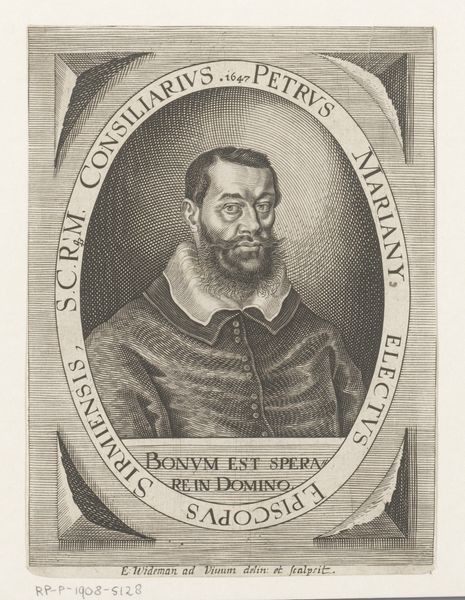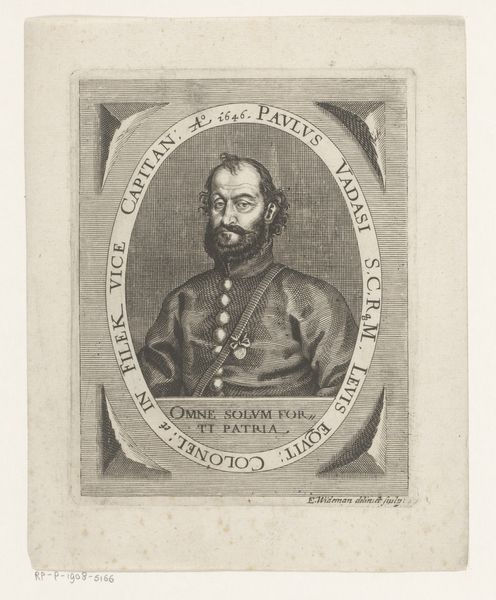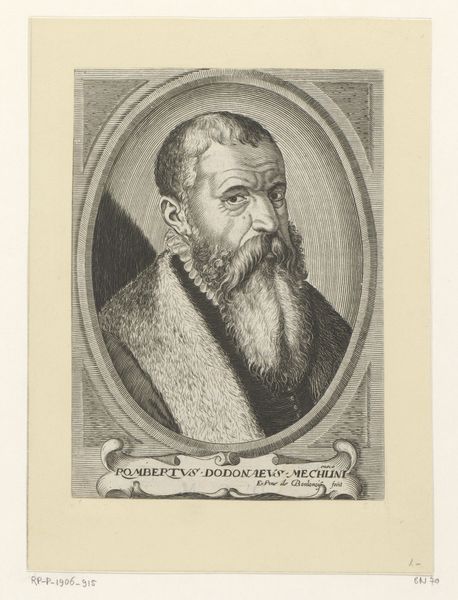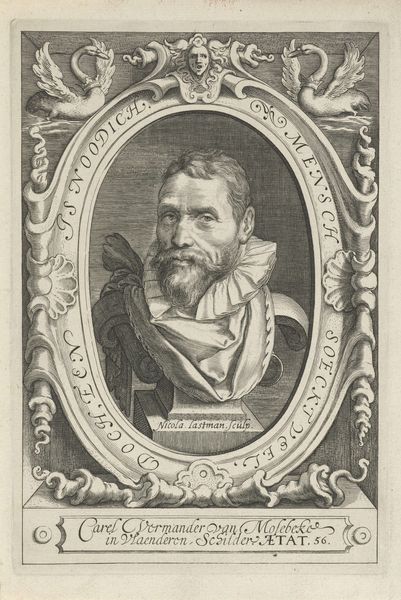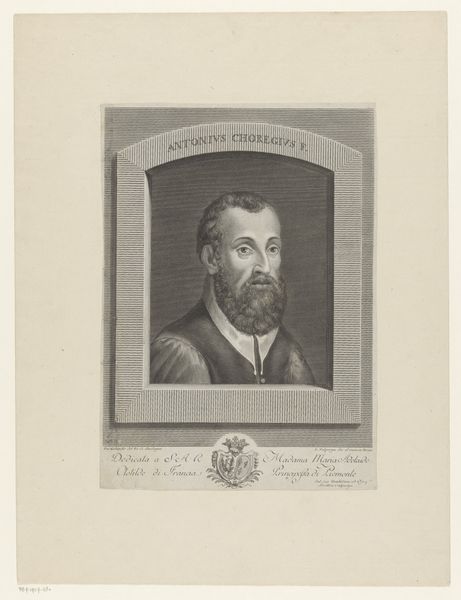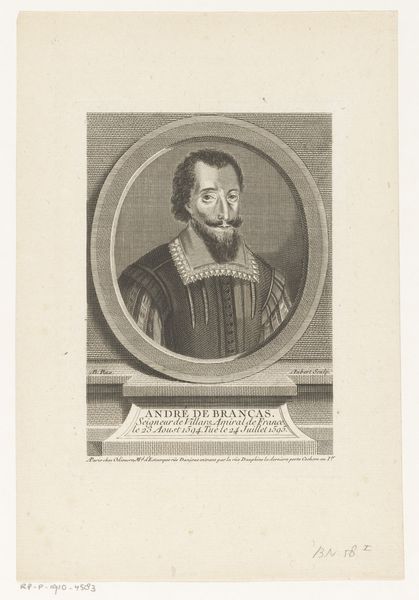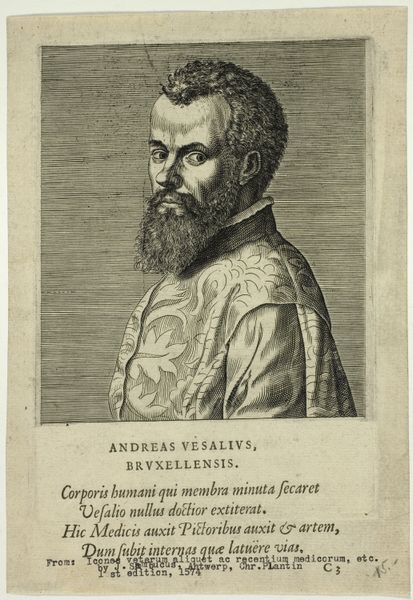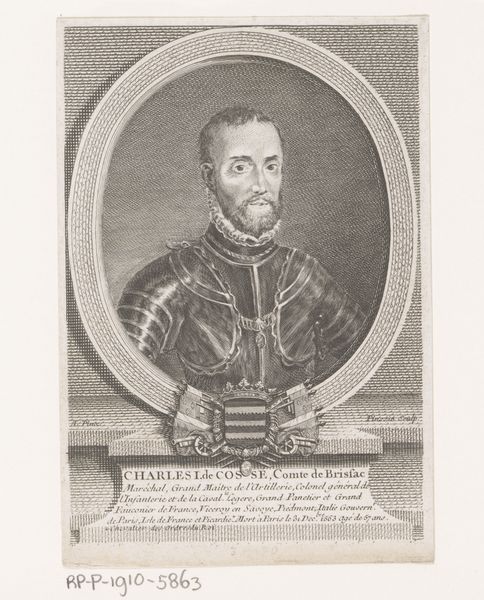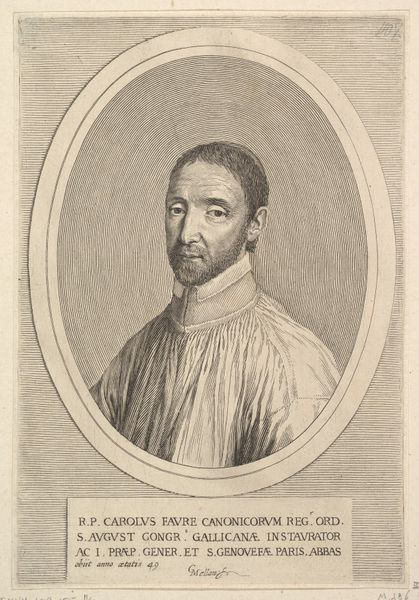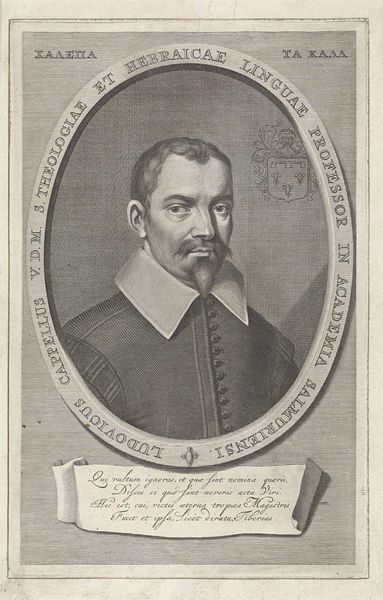
engraving
#
portrait
#
baroque
#
old engraving style
#
portrait reference
#
pencil drawing
#
history-painting
#
engraving
#
realism
Dimensions: height 186 mm, width 138 mm
Copyright: Rijks Museum: Open Domain
Editor: This is a rather formal depiction, isn’t it? A portrait of Andreas Vesalius created in 1682 by Edme de Boulonois. It's an engraving, lending a sense of meticulousness to the whole thing. There's a sternness that captures your attention right away. What's your take? What catches your eye when you look at this engraving? Curator: You know, the brilliance of an engraving lies in its commitment. It's a dance with light, creating shadows with stark lines. In this portrait, Boulonois wasn’t just etching a face; he was immortalizing Vesalius, one of the great anatomists. Notice how the subject seems to observe us directly – almost dissecting the viewer, isn't it? Editor: Absolutely, there's this piercing quality to his stare. It is pretty bold given the period in which he lived. I wonder how much Boulonois knew about Vesalius when he created the work? Curator: That is an interesting thought! While it's difficult to say for certain about the knowledge Boulonois may have held of Vesalius’ character at the time of engraving, one can infer, with relative certainty, a desire on behalf of the artist to commemorate an era of anatomical revolution! Imagine a world where exploring the human body was considered blasphemy – and Vesalius charging forward anyway! It brings a rather subversive edge to it, don't you think? Editor: I never quite considered how transgressive his work was. Thinking about it that way does give it a sharper edge. Thank you! Curator: It makes you wonder about our own presumptions, doesn't it? Art holds up a mirror not only to its subject but also to those who view it, compelling us to think. A fascinating interplay to behold.
Comments
No comments
Be the first to comment and join the conversation on the ultimate creative platform.
